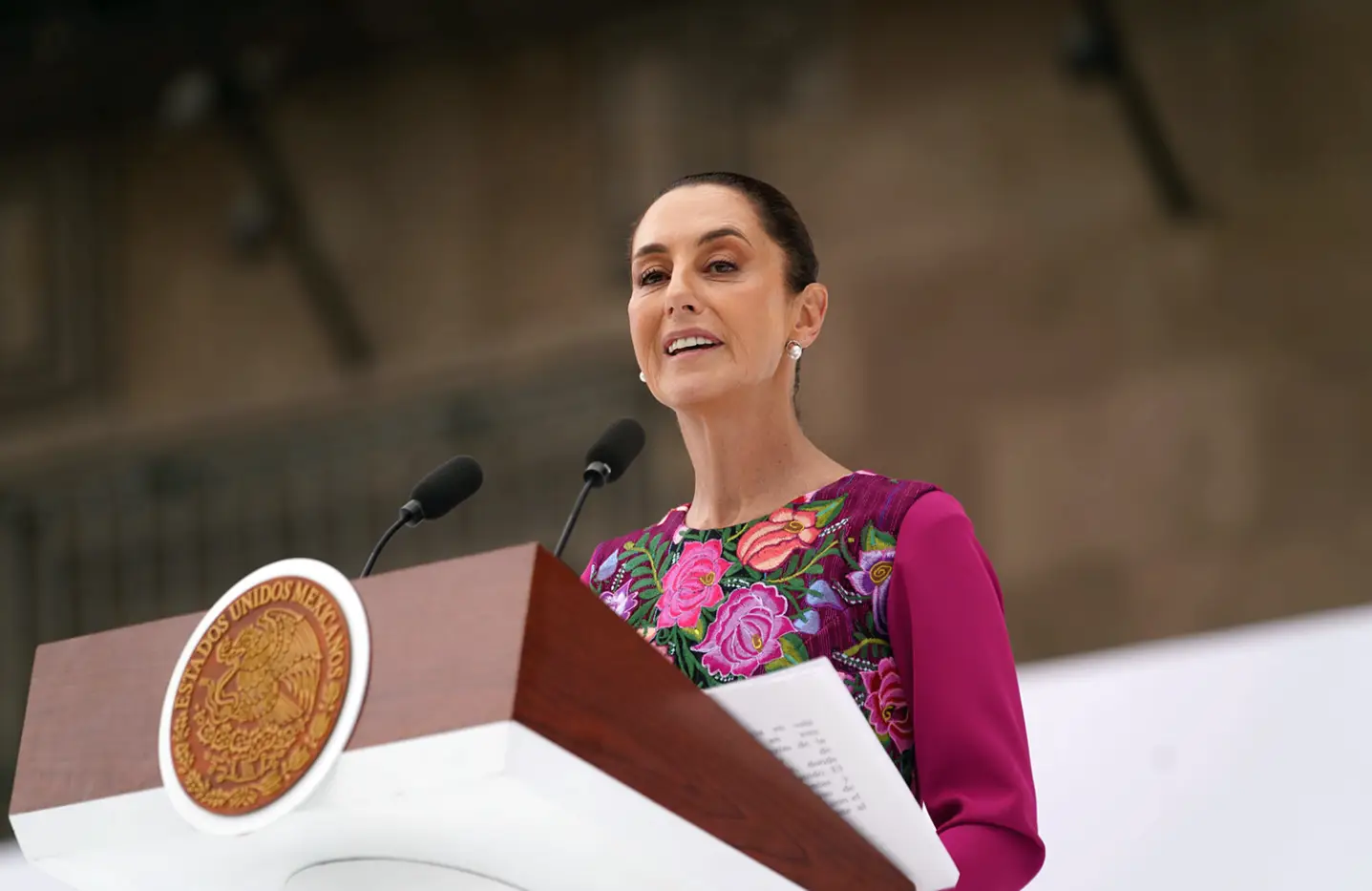Claudia Sheinbaum’s strategy toward the United States is, quite reasonably, grounded in the idea that she will be held accountable only for her administration from now on. Yet, when necessary, she constantly looks backward—either to criticize the “conservatives” or to exalt the achievements of what she still calls Mexico’s “best president ever.” From that rhetorical platform, she seeks to build agreements with Donald Trump’s administration. But Trump, when it comes to Mexico, moves from the past to the present to shape the future of his MAGA (“Make America Great Again”) political project. This imperial crusade—seen by many as senseless and irrational given its impact on the U.S. economy—seems to leave no room for compromise. That’s one reason the relationship between these two trade partners remains perpetually unstable.
In this fraught relationship, Mexican negotiators have gradually conceded on migration. They’ve fortified the border to block the flow of Caribbean, Central, and South American migrants heading toward the U.S., causing bottlenecks at Mexico’s borders. They’ve curbed fentanyl shipments to U.S. drug markets and extradited cartel bosses serving time in Mexican prisons.
Sheinbaum’s government has also accepted tariffs on products not covered under the USMCA (United States–Mexico–Canada Agreement). Now, it finds itself unable to respond to a blanket 30% tariff on all Mexican exports—tariffs that may be raised or lowered depending on how the U.S. views Mexico’s actions. It’s equally powerless to respond to the increasingly visible issue of territorial and maritime control in the fight against piracy, drugs, fuel theft, money laundering, and the smuggling of chemical precursors used in synthetic drug production. This effort includes detentions, seizures, financial crackdowns, and stricter controls.
The one area where the government seems most reluctant to give in is the political base of organized crime. Taking substantive, proactive steps against criminal networks inevitably points back to López Obrador’s administration and its permissive “hugs, not bullets” policy. This is the government’s pressure point: it must do more against the cartels, because doing less could trigger a full-blown political crisis. AMLO still controls the political apparatus, and any betrayal of his vision for a trans-sexennial project—ideally lasting 40 years, as Senator Fernández Noroña has predicted—would be seen as a betrayal of his legacy.
In contrast, Mexico has received little more than uncertainty from “bilateral negotiations.” It often seems that the more Mexico gives, the more the U.S. demands—agreements reached through hard-won negotiation are then swept away with a single stroke. That’s why President Sheinbaum’s repeated calls for a “relationship between equals” amount to little more than a mantra in her morning pressers.
This may be causing friction within the cabinet. A few weeks ago, rumors circulated that Juan Ramón de la Fuente might leave the foreign ministry due to lackluster results or disagreements over the bilateral agenda. And realistically, in the midst of these competing strategies, who could deliver better results?
This leads to a broader question about these zero-sum strategies—where one side’s gain is the other’s loss: what must Mexican negotiators do to establish stable middle ground between both positions? They have two options.
The first is to stick with the current approach of conceding to the MAGA agenda. That would involve handing over politicians and business figures who have directly or indirectly enabled the expansion of drug cartels in the U.S. market.
The second option is to wrap themselves in the national flag and amplify the nationalist rhetoric that President Sheinbaum is increasingly using—or at least to encourage symbolic acts. After all, Mexico is a country steeped in symbols, as seen recently in the protests against unchecked gentrification in Mexico City. There, demonstrators unexpectedly revived 1970s-style anti-colonial slogans like “Gringos, go home!” Even though, in reality, many of the gentrifiers are Mexican nationals who rent or buy property in what were once middle-class neighborhoods.
So far, the Sheinbaum administration is playing both sides. On the one hand, it issued an arrest warrant for Hernán Bermúdez Requena, former public security chief under a powerful Morena senator, over ties to La Barredora cartel—a local franchise of the also-powerful Jalisco New Generation Cartel, which brought a wave of violence to that southeastern Mexican state.
On the other hand, during a tour of the northwest, President Sheinbaum repeatedly voiced opposition to “interventionism” and demanded “respect for sovereignty”—a message that mirrors the “Yankee go home” chants heard on Mexico City’s streets.
The Sheinbaum government is clearly in a serious bind—and time is running out. While the blanket tariff was extended for 90 days, the sword of Damocles still hangs overhead. The Trump administration is likely to keep pushing and securing concessions, with no guarantee that once its demands are met, it won’t just ask for more—especially on the crucial issue of narco-politicians within Morena. So, while the 90-day window offers Mexico a breather, it may also prove a nightmare for the country’s negotiators.
At the end of those 90 days, we’ll see what executive decisions Sheinbaum makes in response to Trump’s tactic of adjusting tariffs based on Mexico’s progress in curbing irregular migration and fentanyl trafficking. And it’s worth noting that this synthetic drug, beyond its deadly components, now contains an even more dangerous element: political significance.
This is where the bilateral relationship slips. Sheinbaum doesn’t want to go after her political allies—and even if she did, she lacks both the power and the will to do so. Washington knows it. That’s why it calibrates the political and media pressure carefully, targeting a government that has shown willingness to cooperate with the MAGA project on some fronts, but stands ideologically aligned with leftist governments in Brazil, Colombia, and Venezuela.
*Machine translation, proofread by Ricardo Aceves.













